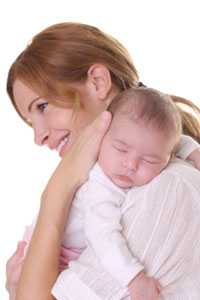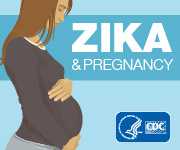Birth Defects Tracking in Minnesota
Minnesota Birth Defects Monitoring & Analysis Program

1 in 33 babies born in Minnesota has a major birth defect.
The Birth Defects Monitoring & Analysis Program (BDMAP) is essential for understanding the impact of birth defects in the state. The program tracks birth defects in Minnesota, works to connect families of children with birth defects to services, and promotes healthy behaviors to women before pregnancy.
Common. Costly. Critical.
- Over a 4-year period, more than 4,000 babies born to Minnesota residents were identified with at least one of the 45 birth defects that the system tracks. About 1 in every 3 of these babies had more than one birth defect.
- Birth defects are costly – hospital costs for the treatment of birth defects are more than $2.5 billion each year in the United States.
- Babies born with a birth defect are more likely to die before their first birthday, compared to babies born without a birth defect.

About the Program
In 2004, the BDMAP was established to examine the occurrence and causes of major birth defects in Minnesota and to facilitate their treatment and prevention. Tracking birth defects in Minnesota began in mid-2005 when the BDMAP started monitoring 45 birth defects diagnosed at all birth and referral facilities in Hennepin and Ramsey counties. In 2010, the state legislature approved expanding tracking efforts from a regional to a statewide system. The goal is to continue expanding efforts to cover all of the approximately 70,000 births each year in Minnesota.
The program partners with clinics, local public health agencies, and Community Action Agencies located throughout the state to work on health promotion activities targeting women before they become pregnant. The BDMAP is one of 14 birth defects programs that receive a grant funded by CDC’s National Center on Birth Defects and Developmental Disabilities.
The BDMAP works to:
- Track birth defects to completely and accurately understand the impact on families in Minnesota
- Offer connections to support and services to every family whose baby is identified as having a birth defect
- Support families education of the general public and health professionals about the causes, impact, and prevention of birth defects
- Facilitate research studies to help identify causes, treatment, and prevention of birth defects
Program in Action
- Supports families: Together the BDMAP and the Early Hearing Detection and Intervention (EHDI) program partner with local public health to ensure families receive appropriate services.
- Refers to services: Each of the local public health agencies that work with the BDMAP has at least one public health nurse, a “key contact,” that works with the families who have a baby with a birth defect. Local public health agencies report back to the BDMAP to assure that families are aware of the available community resources and that they are receiving the services they need.
- Promotes preconception health: In 2012, the BDMAP funded six Preconception Health grantees, including clinics, local public health agencies, and Community Action Agencies throughout the state. Each works to increase awareness and prevention of birth defects in their communities. In addition to reproductive risk assessments and counseling for women of reproductive age, each grantee has developed a special project in folic acid awareness, obesity prevention, or reproductive life planning. These activities will help prevent specific birth defects, such as spina bifida, and improve the chances of a healthy pregnancy and baby in the future.
Making a Difference
This partnership between the BDMAP and local public health is having a meaningful impact on families in Minnesota, as shown in this example:
Charlie was born with a congenital heart defect. His mother Sara didn’t know what to do when she received a letter that told her Baby Charlie had lost his Medicaid/Medical Assistance (MA) coverage when the family moved to a different county. Without MA, Sara could not afford to pay for Charlie’s care.
All parents of children identified by the birth defects program are sent a letter from the Minnesota Department of Health. Sara remembered receiving this letter and that it mentioned birth defects resources. Sara called the number on the letter for help.
The Birth Defects Nurse told Sara that Charlie’s congenital heart defect might qualify him for financial support. The nurse accessed an online screening tool for federal benefits and helped Sara apply for this assistance over the phone. She also mailed more information to Sara for Charlie.
The BDMAP then contacted a Local Public Health “Key Contact” nurse in Sara’s county who helped Sara reinstate Charlie’s MA coverage. The nurse assisted the family to find a primary care provider whose clinic was within walking distance of their new home and helped to reschedule Charlie’s follow-up echocardiogram at the clinic. Now with relief, Sara says,
“Thank heaven the help we needed was there for us. We are very grateful for everything these nurses did to help Charlie get the care he needs.”
More Information
For more information on the Minnesota Birth Defects Monitoring and Analysis Program, please visit the their website or call 1–800–728-5420.
- Page last reviewed: October 23, 2014
- Page last updated: September 21, 2016
- Content source:



 ShareCompartir
ShareCompartir